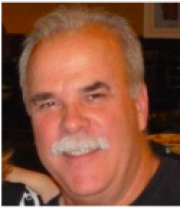Introduction
Karen Nelson is a well known Microbiologist who has appeared in the PBS series “Intimate Strangers”. This interesting article is also on the website for the American Society for Microbiology. The ASA gave us permission to include it in our Mentor library along with links to other similar articles by other microbiologists. Go to www.asm.org. Then click on the career tab and then profiles to read similar articles on different careers in microbiology. Microbiology is one of the many careers you may not encounter everyday. But this is important work that helps protect the health of people throughout the world.
Overview
 Karen Nelson is a Jamaican-born microbiologist who is working to spell out the entire genetic code of different microbes at The Institute for Genomic Research, or TIGR, (pronounced like “tiger”) in Rockville, Maryland. She led the research team that came up with the whole genetic sequence for a bacterium called Thermotoga maritima (therm-uh-toe-guh mare-ih-team-uh), which lives in very hot water.
Karen Nelson is a Jamaican-born microbiologist who is working to spell out the entire genetic code of different microbes at The Institute for Genomic Research, or TIGR, (pronounced like “tiger”) in Rockville, Maryland. She led the research team that came up with the whole genetic sequence for a bacterium called Thermotoga maritima (therm-uh-toe-guh mare-ih-team-uh), which lives in very hot water.
Dr. Nelson is one of the microbiologists featured in Intimate Strangers: Unseen Life on Earth. Dr. Nelson was also featured in an article in a magazine produced by Black Entertainment Television.
What kind of scientist are you?
Well, I’m into microbial physiology—the general biochemistry, or chemical reactions, in microorganisms—and environmental microbiology, the study of microbes in the environment. And I’m linking the two through genomics, the study of living things’ DNA. So I’m an environmental/genomics microbial physiologist.
When did you realize you had an interest in science and how did you go about becoming a scientist?
My interest probably started at an early age when I was in prep school in Jamaica. I’ve always had a curiosity about how things work. The way education is done in Jamaica is that they try to channel you at an early age. So by age 12 or 13 you know whether you’re going to go into the sciences or the arts. I just followed my curiosity and always did what I like doing and it led me to the field of microbiology.
Did you know at that young age that you wanted to be a microbiologist?
I also always had a love for animals and initially I wanted to be a veterinarian. I was planning to be a vet all the way through my undergraduate years in college. I got sidetracked when I realized I didn’t want to spend the rest of my life dissecting animals, but I still wanted to understand life. I got a scholarship to do a master’s program at the University of Florida doing animal science. There I was exposed to ruminant microbiology, which is studying the roles that bacteria and fungi play in the guts of ruminants, a technical word for animals like cows. And I became fascinated by what these microbes were doing for animal health and production. From there I expanded into studying bacteria of relevance to the environment as well.
The smell [of the contents of animals’ stomachs] is distinct, even though it’s a really gross smell [it’s like rotten eggs, though not quite that bad]. But the smell is the result of interactions of all these bacteria and fungi and protozoa living in the digestive tract of animals. The smell they give off is essential to the health and well-being of these animals. We wouldn’t have meat if it wasn’t for these bugs. But the smell’s definitely not on the perfume side.
What degrees do you have?
I hold a bachelor’s degree in animal sciences from the University of the West Indies in Trinidad and Tobago. Then I received a master’s degree in animal sciences from the University of Florida and a Ph.D. in microbiology from Cornell University.
How did you come to be at TIGR?
I finished my Ph.D. and TIGR was looking for someone to work on archaea [bacteria-like microbes that live in very extreme conditions such as superhot or extremely salty water]. I came here originally to work on trying to isolate and characterize new kinds of archaea. But my focus switched to looking at Thermotoga maritima, an organism that’s ancient. That was a whole genome sequencing program funded by the Department of Energy.
What is genome sequencing?
Well, a genome is all the genetic information—the entire DNA sequence—of a living organism. DNA is made up of four chemicals, what we call bases: A, G, C, and T. The combination of these bases spell out genes, which are all the instructions required to build and run a cell. What we aim to do with genome sequencing is to figure out the entire, exact sequence of these bases in a particular organism. [See DNA: The Blueprint for Life.]
We break open a cell and take out the DNA. But DNA is a huge string of pairs of bases. To give you an idea, the human genome has about 3 billion (3,000,000,000) base pairs. Three billion is the number of seconds in 95 YEARS! If you’d spent your entire life counting every second, you wouldn’t even be at 1 billion yet.
So we shatter the huge DNA molecule into smaller pieces. We then make many copies of these pieces so we can work with them better. Sequencing machines then read the order of A’s, G’s, C’s and T’s in these short sequences. The ends of the pieces link with the ends of other pieces, so when we put all these short sequences into an assembly machine, they attract and stick together in an exact order. The machine then prints out a long, long, long sentence made up of those four letters, or bases. That’s the genome sequence.
How long did the Thermotoga sequencing project take?
Generating the sequence took a little under two years. When we completed the sequence we were all excited and everybody kept saying, “Are you sure? Are you sure it’s closed?” Because you need to make certain it’s put together in one continuous piece the right way. So it was really exciting. And we all celebrated. But it was kind of bittersweet because you’re so much in the throes of generating sequences, and you’re trying to get something completed, but when it was done, it was like, “Oh, ok, it’s DONE.”
We’re now in the process of deciphering what all the genetic information means, which we may never stop doing. We still don’t know what half the genome is doing. With every genome sequence that’s completed, we have a whole new set of questions that come up.
What new and exciting things have we been able to learn now that we have the whole Thermotoga sequence?
I started looking at the sequence, and I could see these repeated sequences—specific, short chains of bases that were scattered all over the sequence—and they’re identical to sequences descibed in the genomes of another kind of bacteria and of the archaea, organisms form a separate domain, or main category, of life. I was fascinated because it showed that Thermotoga is actually sharing characteristics of another domain of life. It suggested that either Thermotoga is so close to an ancestor [of both the archaea and the bacteria] or that it has exchanged DNA with organisms across domains.
What do you like best about your career as a research scientist?
That there’s so much work to do and the field is so open. There’s so much we don’t know about micro-organims and they have the potential to really revolutionize the way we do things.
What are the downsides?
I haven’t really found any yet. I really enjoy what I’m doing. I know sometimes we end up working long hours, [but it’s] because we want to.
Most scientists don’t expect to be TV stars. What do you think about appearing in the PBS series Intimate Strangers?
I think if I can get one student encouraged to pursue a career in science, I’d be happy.
What would you tell kids to encourage them to consider a career in science?
I believe that when we’re kids and we think we can only be doctors or vets or lawyers, we’re not really aware of all the many options there are out there. I’d encourage kids to be curious and explore as many of these avenues that come their way and see if they like it. I was preparing to be a vet and I wanted to do it, but now I don’t know that I would have enjoyed it as much as what I’m doing right now.
I’d encourage kids to talk to people in different fields to see if it’s something they’d really want to do or not.
Science is exploding like crazy and there’s going to be such a demand for young scientists and they just might find something they like.
From the ASMA website:
Because there are so many different species of microbes out there and they do such very different things, no one microbiologist can study every kind of microorganism. Microbiologists and other scientists who study microbes usually focus on a particular microbe or research area.
Here are a few examples:
- Bacteriologists focus specifically on bacteria and how they help or hurt us.
- Virologists specialize in viruses and how they infect cells.
- Mycologists study fungi in particular.
- Protozoologists devote their efforts to protozoa.
- Epidemiologists investigate infectious disease outbreaks to learn what caused them and if we’re facing a deadly new microbe.
- Immunologists study how the body defends itself against microbial invaders.
US Department of Labor Statistics for Microbiologists
2012 Median Pay for Microbiologist was $66,260 per year
The number of people employed as microbiologists in the US in 2012 was 20,100.
Job Outlook
Employment of microbiologists is projected to grow 7 percent from 2012 to 2022, slower than the average for all occupations. More microbiologists will be needed to contribute to basic research, solve problems encountered in industrial production processes, and monitor environmental conditions to ensure the public’s health and safety.
How to Become a Microbiologist
A bachelor’s degree in microbiology or a closely related field is needed for entry-level microbiologist jobs. A Ph.D. is typically needed to carry out independent research and to work in colleges and universities.








This text is invaluable. When can I find out more?
The American Microbiology Association has a website, http://www.asa.org, where you can read articles by other microbiologists and learn more about various job opportunities. This is important work done around the world.